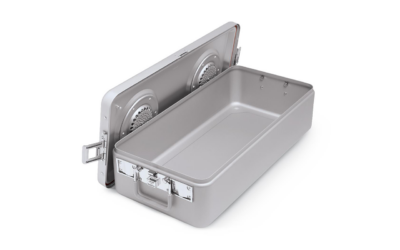
The medical waste management market is expected to continue to grow in the coming years. This includes the growth of the operating room and surgery center segments of the overall market.
The global medical waste management market is projected to grow at a compound annual growth rate (CAGR) of 4.09% to reach $18 billion by 2024, up from $14 billion in 2018, according to ResearchAndMarkets.com.
Waste that is generated during surgical processes is known as surgical waste. Surgical waste is both hazardous and non-hazardous. Out of the waste generated from surgeries, 85% is non-hazardous and 15% is hazardous. Surgical waste is a huge threat to the environment. Hence, it necessitates proper disposal. Annually, around 250 million surgeries are carried out across the globe, which results in the bulk generation of surgical waste. On average, annually, more than two million tons of surgical waste is being generated. Each day, 5,500 tons of surgical waste is being generated, out of which, approximately 825 tons is hazardous surgical waste. Injections and syringes constitute the bulk of medical waste. Globally, each year, more than 12 billion injections are used, out of which, 30% are for surgical procedures. The mishandling of these injections will lead to the spreading of infectious diseases like human immunodeficiency virus (HIV), Ebola virus disease (EVD) and other pathogenic problems.
Analysts forecast that the global surgical waste management market will grow at a CAGR of 5.83% during the period 2017-2021, according to ResearchAndMarkets.com
One trend in the market is a growing demand for automation in surgical waste management.
“The growing focus of vendors on technological advancements has led to the development of automated equipment to dispose surgical waste. The adoption of advanced products helps with the proper and quick disposal of surgical waste. Technological advancements and automation have minimized the manual work associated with the disposal of surgical waste. Technology has enabled the remote collection, separation and disposal of surgical waste,” according to ResearchAndMarkets.com.
“Also, advancements in incineration have resulted in the use of sensors, which help with the segregation of different types of waste. Robotic technology is also being used in the separation of huge volumes of surgical waste in a short period of time. For instance, ZenRobotics has created a robotic-assisted sorting system that is equipped with multiple sensors, 3D laser scanners and visible spectrum cameras,” according to ResearchAndMarkets.
The rising global population is giving rise to a greater number of patients increasing the growth of the medical waste market. Furthermore, government initiatives regarding the safe disposal and management of medical waste will continue to drive the market growth in the coming years, according to ResearchAndMarkets.com.
“The growing population across the globe is increasing the number of patients, resulting in the rising volume of medical waste,” according to Mordor Intelligence. “Thus, with the rising volume of medical waste, the governments, worldwide, are taking several initiatives for the management of medical waste.”
The increasing number of initiatives by government authorities is driving the medical waste management market. Several federal bodies maintain laws concerning medical waste. These include the Occupational Safety and Health Administration (OSHA), the Centers for Disease Control (CDC), the U.S. Food and Drug Administration (FDA), the Department of Transportation (DOT) and the Drug Enforcement Administration (DEA).
Some other factors, like rising awareness regarding medical waste and eco-friendly options, are also impacting market growth.








